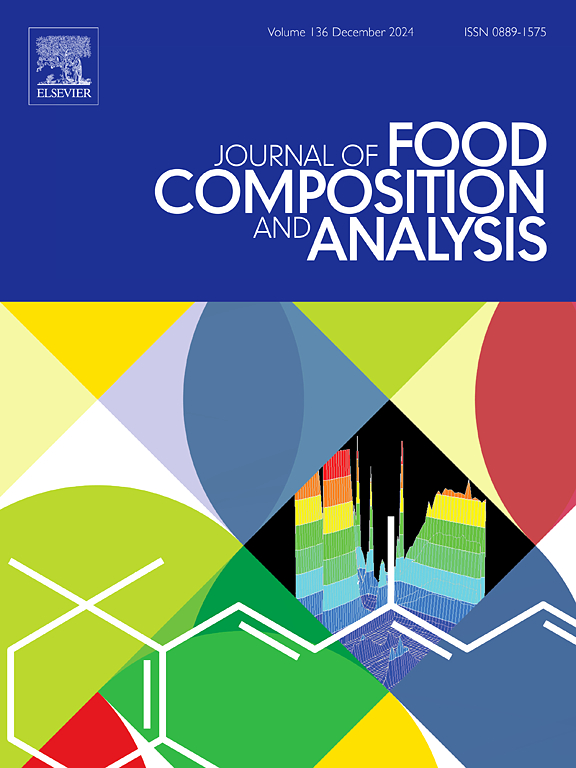Selenium speciation in enriched Pleurotus mushrooms by mixed-mode HPLC-ICP-MS
IF 4
2区 农林科学
Q2 CHEMISTRY, APPLIED
引用次数: 0
Abstract
Selenium plays a crucial role in human health, with Se organic species being safer and more bioavailable than inorganic forms. This study aimed to develop a fast and reliable analytical method for Se speciation to evaluate the effectiveness of Pleurotus mushroom enrichment strategies. A reversed-phase cation-exchange bimodal mixed-mode high-performance liquid chromatography - inductively coupled plasma mass spectrometry (RP/CEX HPLC-ICP-MS) method was optimized for the separation and quantification of SeMet, SeCys₂, MSC, Se(IV), and Se(VI). Enzymatic hydrolysis was performed using ultrasound-assisted extraction with pepsin and protease XIV in Tris-HCl, achieving high extraction efficiencies (67–102 %). Chromatographic separation was completed within 6.5 minutes under isocratic conditions. The method was applied to Se-enriched Pleurotus mushrooms, revealing effective bioconversion of inorganic Se into SeMet. However, mushrooms grown in Se(VI)-supplemented substrates retained higher levels of inorganic Se, raising potential safety concerns. These findings support the use of Se(IV) as a preferable supplementation strategy for improving the nutritional quality of edible mushrooms.
求助全文
约1分钟内获得全文
求助全文
来源期刊

Journal of Food Composition and Analysis
工程技术-食品科技
CiteScore
6.20
自引率
11.60%
发文量
601
审稿时长
53 days
期刊介绍:
The Journal of Food Composition and Analysis publishes manuscripts on scientific aspects of data on the chemical composition of human foods, with particular emphasis on actual data on composition of foods; analytical methods; studies on the manipulation, storage, distribution and use of food composition data; and studies on the statistics, use and distribution of such data and data systems. The Journal''s basis is nutrient composition, with increasing emphasis on bioactive non-nutrient and anti-nutrient components. Papers must provide sufficient description of the food samples, analytical methods, quality control procedures and statistical treatments of the data to permit the end users of the food composition data to evaluate the appropriateness of such data in their projects.
The Journal does not publish papers on: microbiological compounds; sensory quality; aromatics/volatiles in food and wine; essential oils; organoleptic characteristics of food; physical properties; or clinical papers and pharmacology-related papers.
 求助内容:
求助内容: 应助结果提醒方式:
应助结果提醒方式:


